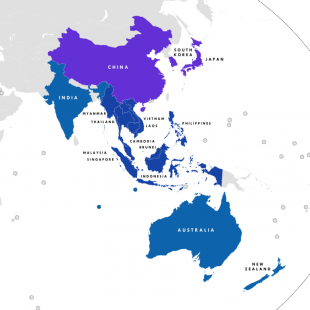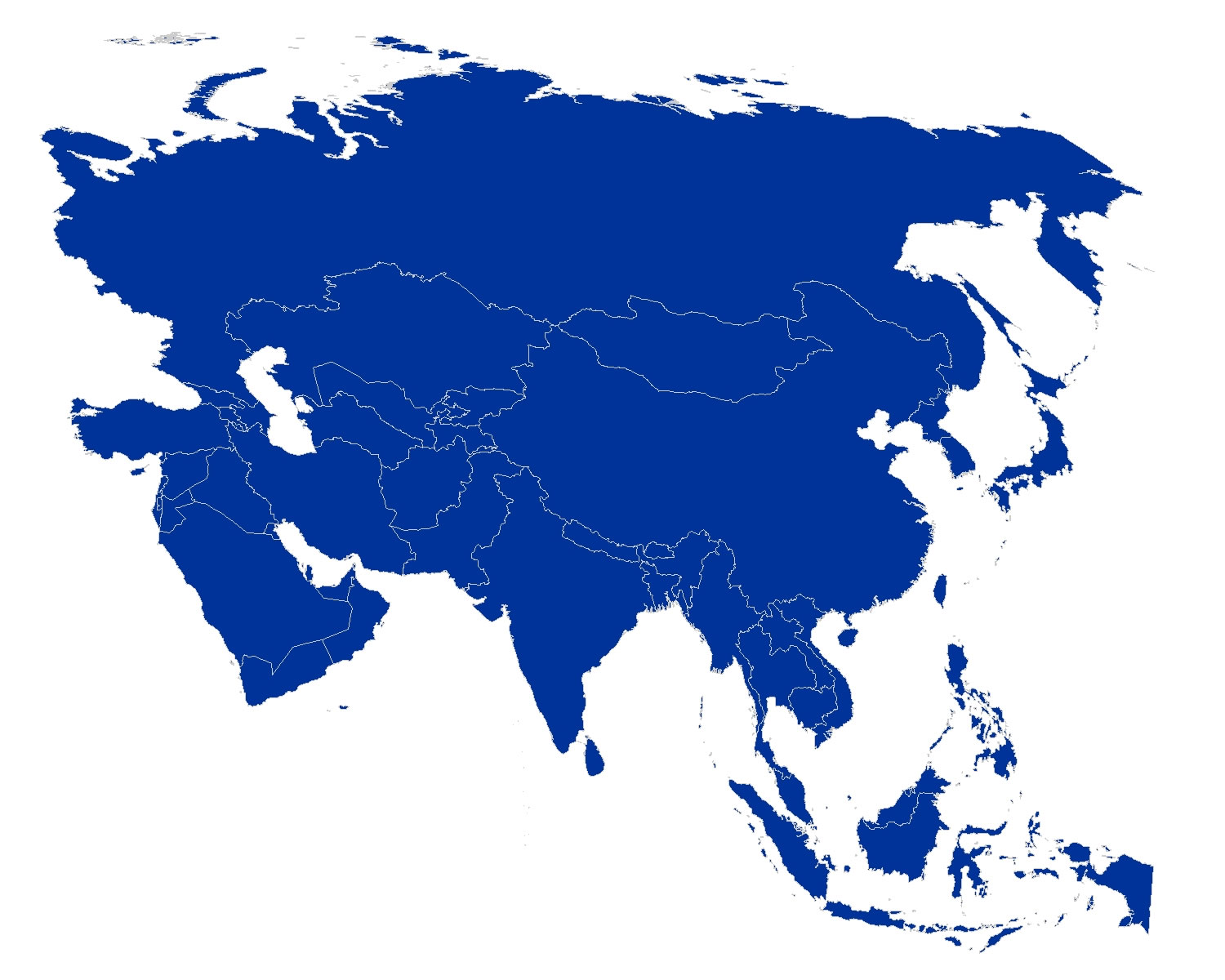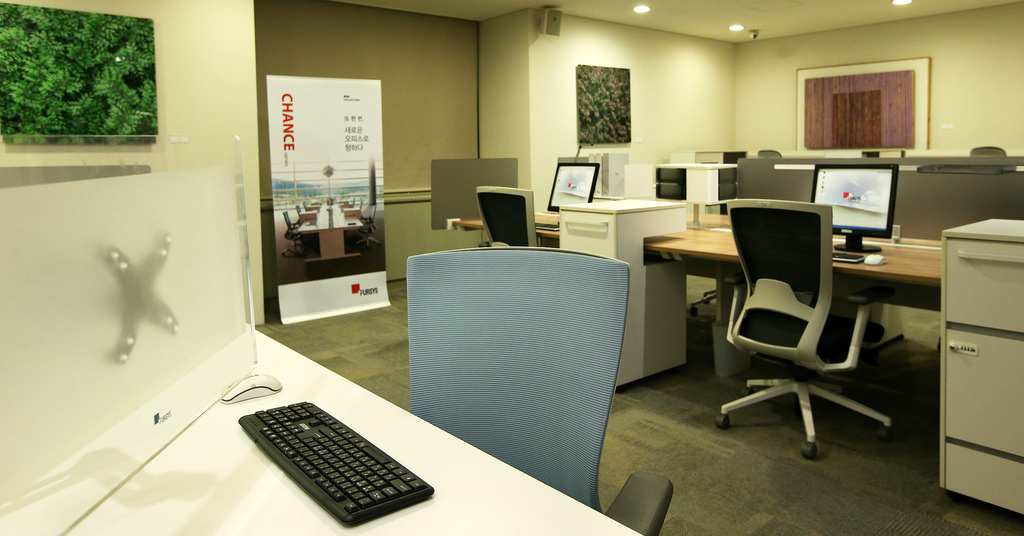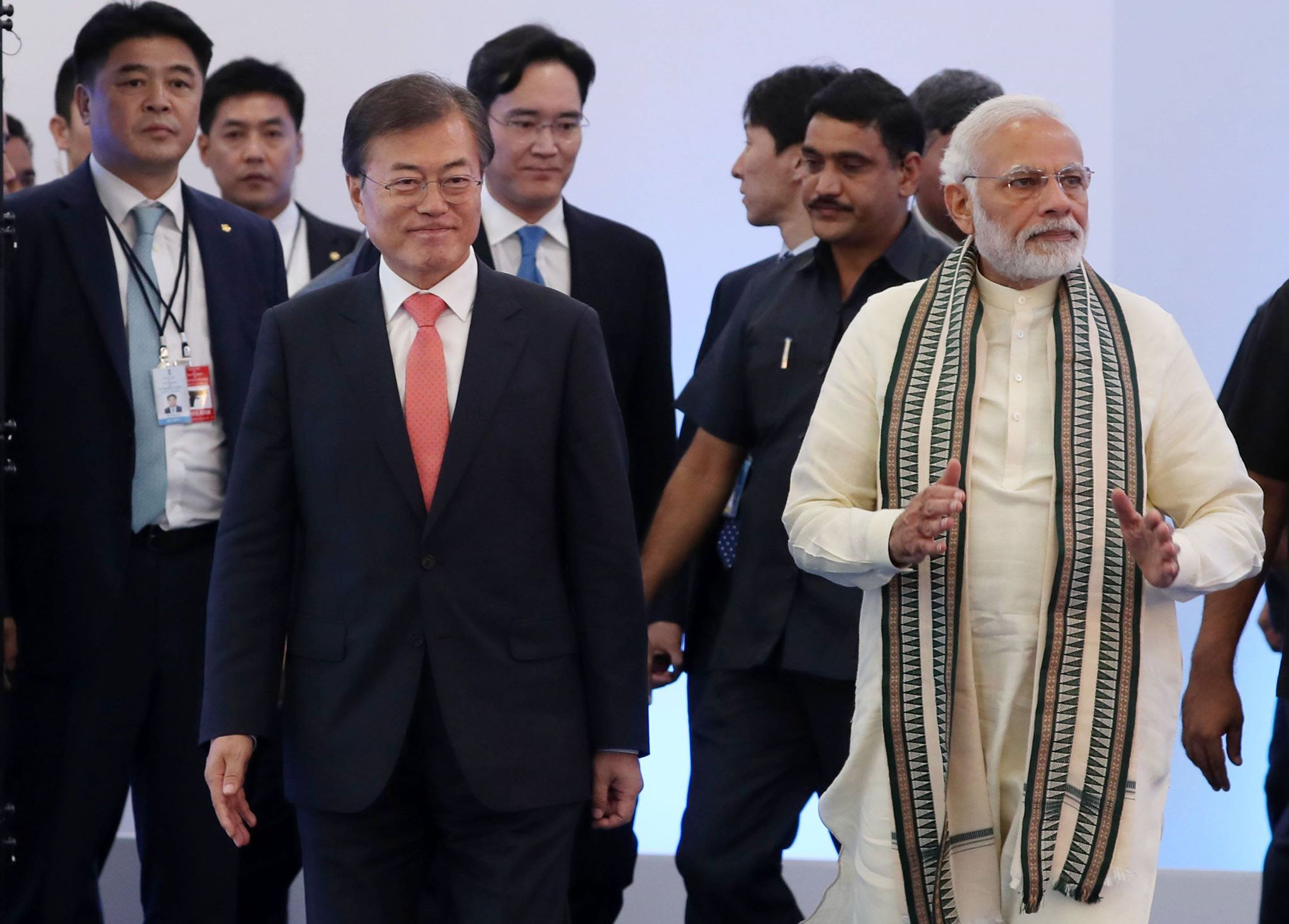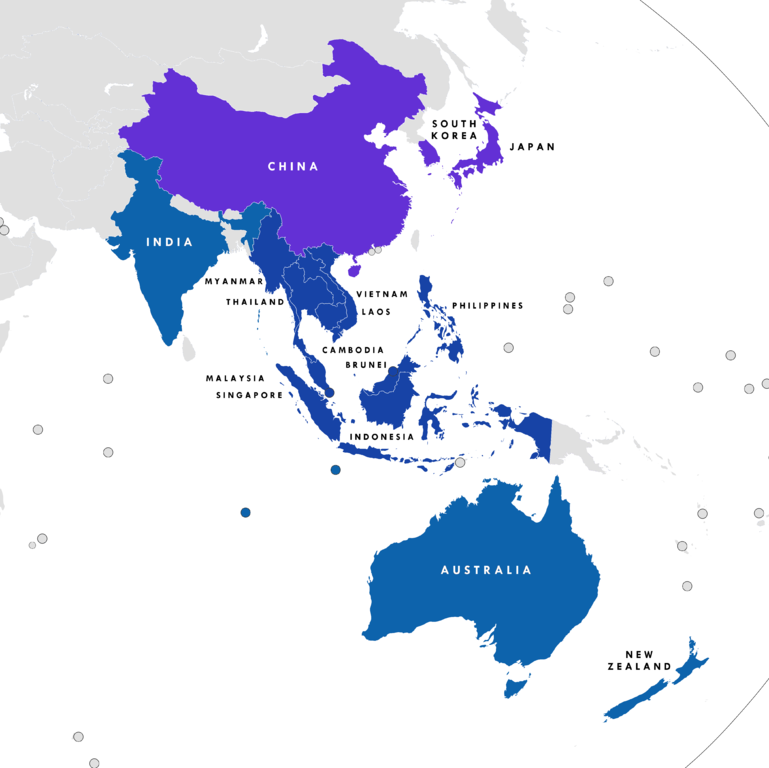
Australia and South Korea: Strengthening Middle-Power Bonds
Australia-South Korea relations, although strong, have never quite reached their full potential, and it’s time that they did — economically, in people-to-people social and cultural terms, and above all, given the present fraught and fragile regional environment, in political and security terms. That will be the theme of my talk today, taking each of these areas in turn, with a particular focus on the security and strategic dimension. I hope that in doing so I will be very much reflecting the concerns and preoccupations that have brought you together for this important symposium, jointly sponsored by the Academy of Korean Studies, the Australia-Korea Foundation, the Australian Center for Asian Business, the King Sejong Institute Adelaide and the University of South Australia Business School. Thank you to the organizers for inviting me to join you.
The strength of our relationship with South Korea has had its ups and downs, the downs mainly associated with concerns on our side on human rights issues — not least the threatened execution of Kim Dae Jung in 1980 — during South Korea’s less democratic periods, now thankfully well in the past. But with diplomatic relations firmly established since the early 1960s and economic ties developing rapidly since then, our relations with South Korea have always been in better shape than our ties with the relentlessly and consistently authoritarian North Korea.
Things did not get off to a very good start when we fought against the North in the war of 1950-53, committing more than 17,000 troops, of whom 340 were killed, to join the UN forces supporting the South. And they haven’t improved much since: diplomatic relations have been very erratic, and economic relations almost non-existent. Australia-North Korea diplomatic relations were not established until 1974, and then abruptly suspended the following year when, in response to a perceived slight from us in the United Nations, the details of which seem to have become lost in the mists, North Korea abruptly withdrew its mission from Canberra and expelled ours from Pyongyang. Indeed, so abrupt was the withdrawal, so the story goes, that one flustered North Korean official crashed his car on the way to the airport; rushing into the nearest house for assistance, he found that his would-be good Samaritan was the South Korean Ambassador! It wasn’t until 2000 that Australia resumed diplomatic relations through our embassy in Beijing, with Pyongyang reopening its embassy in Canberra in 2002, only to close it again in 2008. Diplomatic relations continue, now conducted through North Korea’s embassy in Jakarta and ours in Seoul, but the relationship is very much constrained by our deep concerns, along with everyone else’s, over North Korea’s nuclear weapons and missile programs, an issue which I will come back to later.
Economic Dimension
The strongest dimension now of our relationship with South Korea is unquestionably the economic one. We have similar sized economies, with South Korea’s US$1.4 trillion economy ranking 11th and our US$1.2 trillion one ranking 14th in the world in the latest World Bank figures for GDP at current prices, and South Korea is well established as Australia’s fourth-largest trading partner (after China, the US and Japan). South Korea’s share of our total trade is only 4.8 per cent, but it has been on a steady growth trajectory, whereas Japan’s share has been declining. We have mainly exported commodities (iron ore, coal, beef, sugar and wheat), getting back mainly manufactures in return (cars, electronics, machinery) but education and tourism are making a big and growing contribution to our exports, and the biggest upside for the future remains in services.
A less comforting side of the trade story is that while the Korea-Australia Free Trade Agreement is a substantial achievement, it does not seem to have been given the prominence or been treated with the significance, in the minds of Australian businesses, of the China-Australia Free Trade Agreement and Japan-Australia Economic Partnership Agreement negotiated around the same time. My sense overall is that South Korea just does not seem as familiar to Australians as China and Japan have long been, and that needs to be remedied. The most obvious weakness in our economic relationship is that two-way investment —especially that of Australia into South Korea — remains comparatively negligible, but that is not something unique to South Korea: it’s the same story all round Asia, as our businesses remain far more comfortable investing in the UK, the US or New Zealand than they do anywhere in Northeast, Southeast or South Asia.
People-to-People Dimension
If the Australia-South Korea relationship is to get the wider attention here that its economic significance deserves, part of the answer must be building its people-to-people dimension. There are foundations on which to build in the 200,000 South Koreans in Australia, and around 30,000 Australians in South Korea at any given time. But most Koreans are here only temporarily, as tourists or students, and the overall numbers are quite small as compared with some of our other key Asian relationships. In the case of education, for example, the latest figures for international student enrolments show just over 4,000 South Koreans here for higher education, and 18,000 overall — as compared with China’s 120,000 higher and 170,000 overall, and India’s 47,000 and 63,000, respectively. Obviously, South Korea has nothing like the population base of these big two countries, and it still ranks seventh overall for international enrolments, but it’s a little disappointing to see it listed below countries like Nepal and Brazil.
So, there are plenty of challenges for the Australia-Korea Foundation and others working to give real human-dimension weight and substance to our relationship, not only in the quantity of contacts but their quality. I know the effort is being made — when in Seoul recently for a nuclear conference, my hotel seemed to be full of a diverse and really interesting collection of quite high-level Australians there on a Foundation-sponsored visit. But more still obviously needs to be done.
Political and Security Dimension
The political, diplomatic and security dimension of our relationship is potentially the most important of all, given the dynamics currently in play in the region and the wider world, with China manifestly no longer willing to observe Deng Xiaoping’s injunction to “bide its time and hide its strength,” the United States giving totally confused and confusing signals about the nature and intensity of its engagement with the region and developments on the Korean Peninsula itself generating enormous world attention.
There are quite firm foundations on which we can build our relationship in this geopolitical space. It was Prime Minister Bob Hawke’s visit to Seoul in January 1989 that saw the conception of the APEC process — born in Canberra 10 months later at a conference I chaired as then Foreign Minister — and I remember well how closely and productively South Korean and Australian ministers and officials worked together as APEC evolved over the next few years, first in finding a way of embracing Taiwan as well as China in the process, and then in adding a leaders’ meeting to the institutional framework of this centrally important regional co-operation initiative. I also remember well participating, albeit as a marginal rather than central player, in the Agreed Framework/KEDO negotiations in the mid-1990s, the first serious attempt to deal with the prospect of a North Korean nuclear weapons capability. The status of each of us as firm allies of the United States helped then, as it does still now, in building trusting and constructive working relationships, but there has been, remains, and can be more to our political and security relationship than just that.
Those co-operative diplomatic exercises in the past have in more recent years been given stronger institutional backup. The 2009 Joint Statement on Enhanced Global & Security Co-operation of Prime Minister Kevin Rudd and President Lee Myung-bak resulted in an action plan embracing regular reciprocal ship and aircraft visits, enhanced bilateral exercises, inter-service and defense policy talks and military intelligence sharing, arrangements now further spelt out in the 2015 Blueprint for Defence & Security Co-operation. Since 2013, very importantly, we have had in place 2+2 bilateral dialogue meetings with our foreign and defense ministers. And on a wider, plurilateral front, we have also had since 2013 the establishment of the MIKTA group (Mexico, Indonesia, Korea, Turkey and Australia), initiated by South Korea to bring together a geographically diverse group of G-20 members to informally consult and try to bridge divides on global issues like development, cyber and nuclear security, climate change and the environment.
North Korea Nuclear Negotiations
Whether we can translate this steadily growing and intensifying set of relationships into any meaningful role for Australia in the forthcoming North Korea nuclear negotiations remains to be seen. We played a bit-part in the past — in the Agreed Framework negotiations, contributing to meeting the North’s energy needs, which was part of the hoped-for settlement — and could again in this way. We did participate in the investigation into the 2010 sinking of the Cheonan and could again contribute to international monitoring and verification processes that will clearly need to be part of any denuclearization settlement, or steps on the way like an agreed freeze on weapons and delivery system development, and fissile material production. But clearly, when it comes to the negotiations themselves — if they don’t implode before they get seriously started — we cannot expect to play anything more than a bystander role. The central players will of course be, apart from North and South Korea and the United States, China and to a lesser extent the other participants of the Six-Party Talks, Japan and Russia.
I should say in relation to the forthcoming summitry that it is an enormous credit to President Moon Jae-in and his officials that things have come as far and as fast as they have, with the Olympics initiative followed by some very deft diplomacy in creating the conditions for President Trump to be able to agree — as impetuous, unexpected and uninformed by knowledge and advice as his agreement undoubtedly was — to meet with Kim Jong Un. While there is intense uncertainty and nervousness about how things will unfold in the weeks ahead, I have always believed, incorrigible optimist that I am, that a sustainable deal is doable with Pyongyang, as ugly and indifferent to normal ethical constraints as the regime undoubtedly is, and I am reinforced in that view after two days of discussions, including with senior officials close to the Blue House, in Seoul last month.
I found clear support there for the analysis that Kim’s basic intentions are above all defensive rather than aggressive; that he is focused on regime survival and knows that to be homicidal is to be suicidal; and that he genuinely wants a deal. In that context, the prevailing South Korean government view (and for what it’s worth, mine) is that Kim is unlikely in the short to medium term to commit to anything more than a freeze on fissile material production and the development and testing of both weapons and delivery systems — knowing that this freeze would have to be deep, comprehensive and fully verifiable to have a chance of being accepted.
But there is also a view in the present South Korean government that Kim’s ultimate agreement to full denuclearization of the North (without an accompanying impossible demand that South Korea remove itself from extended US deterrence) is not impossible in the context of the long-sought conclusion of the Korean War peace treaty, normalization of diplomatic relations, and the development over time of some genuine trust between the North and its neighbors — and, above all, the US.
The question that has all of us on the edge of our seats is whether, if this is in fact the way North Korea’s position emerges, the US will be capable of taking yes for an answer. What, if anything, is in President Trump’s head — and will be on the day — remains a complete mystery. One can’t help but be reminded of what the speechwriter Peggy Noonan is reported to have said of President Reagan “The battle for the mind of Ronald Reagan was like the trench warfare of World War I: never have so many fought so hard for such barren terrain.” But the trouble is that whereas Reagan had around him grounded and competent people like George Shultz and James Baker to save him from himself, Trump now has Mike Pompeo — and, most alarmingly of all for anyone who has had any dealings at all with him, as I have — John Bolton, with Defense Secretary [James] Mattis the only remaining adult anywhere near the room. I know John Bolton; I have worked with John Bolton; and John Bolton is no diplomat. He is a relentlessly stubborn and destructive ideologue: give-and-take negotiation is for wimps and he has never seen a proposal for coercive military action that he hasn’t liked. So we are going to be on the edge of our seats for a good while yet.
Middle-Power Diplomacy
While Australia cannot expect to be more than a bit-player on all these North Korea issues, I am persuaded that there is a great deal we can and should be doing together with South Korea in the general area of middle-power diplomacy. Making this point will require me to say something first about what I mean by middle powers and middle-power diplomacy.
“Middle powers” are best described as those states which are not economically or militarily big or strong enough, either in their own regions or the wider world, to impose their policy preferences on anyone else — but which are nonetheless sufficiently capable, credible and motivated to be able to make an impact on international relations. There is no standard list of current middle powers, or any commonly agreed list of objective measures — like population size, GDP, or military budgets — distinguishing middle powers from others. But that list would certainly include Australia and South Korea and the other members of the MIKTA group — Mexico, Indonesia and Turkey — as it would Canada and most of the Scandinavians.
A better, and not necessarily circular, way of identifying middle powers is to describe them as states that practise “middle-power diplomacy,” which has a characteristic motivation and method. The characteristic motivation is belief in the utility, and necessity, of acting co-operatively with others in addressing international challenges, particularly those global or regional public goods problems which by their nature cannot be solved by any country acting alone, however big and powerful. And the characteristic diplomatic method is coalition building with “like-minded” states — those who, whatever their prevailing value systems, share specific interests and are prepared to work together to do something about them.
The contributions that middle powers, so acting, can make to better international relations include:
• Agenda setting: bringing new ideas to the table, which bigger players carrying too much baggage, or too stuck in their ways, to embrace — e.g. in our own region, the creation of APEC and the ASEAN Regional Forum, and the Australia-Indonesia initiated peace plan for Cambodia;
• Bridge-building between developed and developing countries — one of the major aspirations of MIKTA;
• Building critical masses of support for global or regional public goods, and rule-based international order, policy change (e.g. climate change; the responsibility to protect (R2P) against mass atrocity crimes; and arms control treaties, like those abolishing cluster bombs and landmines, and also hopefully now nuclear weapons elimination — although some of the key middle powers are giving greater weight to being US allies than good global citizens).
How effective middle powers can be in making a difference depends on a number of factors, including:
• Resources: the need for a reasonably wide network of diplomatic posts, and officials with energy and stamina;
• Creativity: what middle powers lack in economic, political or military clout they can often make up for with quick diplomatic footwork: evident in the Asian region, e.g., again in creation of new security and economic architecture (APEC, ARF, the EAS [East Asian Summit]), and the Cambodia peace plan;
• Credibility: the need to avoid hypocrisy, by practicing at home what is preached abroad (within MIKTA, Turkey in danger of losing that on democracy and human rights issues; Indonesia will need to take care with rising Islamist intolerance). Allies of great powers, like Australia, have to be perceived as having some real independence — not just acting as a cipher or stalking horse for a protector;
• Opportunity: while there have been many past examples in our region of effective middle power diplomacy, we have to recognize that in an Asian setting, where great or major power rivalry — above all now between China and the US, but also Japan and China, China and India, India and Pakistan — provides so much of the context and dynamics, the scope for middle powers to be really influential, on the big peace and security issues in particular, may be limited.
While recognizing the reality of limited opportunity, let me offer nonetheless three examples where the middle powers of this region — very much including Australia and South Korea — could, in my judgement, have a significant impact.
First, in setting the agenda for the East Asian Summit, which has all the ingredients to become the pre-eminent regional dialogue and policy-making body, containing as it now does all the major regional players (including now the United States and Russia), meeting at leader level and mandated to address both economic and political issues. Its 18 members include a majority of middle powers — most ASEAN members, Australia and South Korea — and New Zealand could also be so described, because of its tradition of multilateral activism.
Second, in visibly pushing back against excessive Chinese assertiveness and overreach, including in the South China Sea. While China manifestly does not want to provoke violent conflict anywhere, it is clearly intent on re-creating as much of the historic, hegemonic, tributary relationship with its southern, and perhaps eastern, neighbors as it can get away with, and a united front of middle powers might be more effective in resisting this than relying on an increasingly erratic United States. There has been much talk of the “Quad” in this context — the idea of India, Australia, Japan and the United States showing a united front, diplomatically and to some extent militarily, with joint exercises and the like — and I don’t oppose continuing to cautiously develop that co-operation. But I am much more attracted, in this context, to developing such a united front grouping which would harness the collective middle-power energy and capacity of a number of regional states of real regional substance — in which, for example, India, Australia and Japan would be joined by South Korea, Indonesia and Vietnam. I don’t know whether President Moon is yet thinking in these terms, but his visit last month to Vietnam — South Korea’s largest economic partner in Southeast Asia — has been described by some analysts as a foray into just that kind of regional middle-power coalition building.
Third, some of us are in a position to influence the global nuclear weapons elimination debate — and should do more than we have. Had Australia and South Korea, along with our larger neighbor Japan, been willing to support President Obama’s move toward a “No First Use” commitment, the world might have taken a significant step toward reducing the salience and legitimacy of the most indiscriminately inhumane and existentially threatening weapons ever invented — though the support of Central and Eastern Europe NATO allies would probably also have been necessary.
There is a big job to be done in bridging the gap between those who, on the one hand, will settle only for the kind of absolutism embodied in the Nuclear Ban Treaty, and on the other hand, the nuclear armed states and those sheltering under their protection who want essentially no movement at all on disarmament. Working for a meaningful and achievable halfway house solution, with a credible — not incredible — road map towards ultimate elimination, is a task in which Australia and South Korea can both be quintessentially important players.
Raw economic and political power will always count for a lot in international affairs. But it does not count for everything. Middle powers with a sense of where they want to go, and with the credibility, resources, and energy to follow through, can have a major impact in making this region and the wider world safer and saner. That is the challenge for both South Korea and Australia, and I believe that by working ever more closely together to strengthen the many bonds we already share, we can deliver on it.
By Gareth Evans, Chancellor of Australian National University, and former Australian foreign minister.
(Global Asia)



